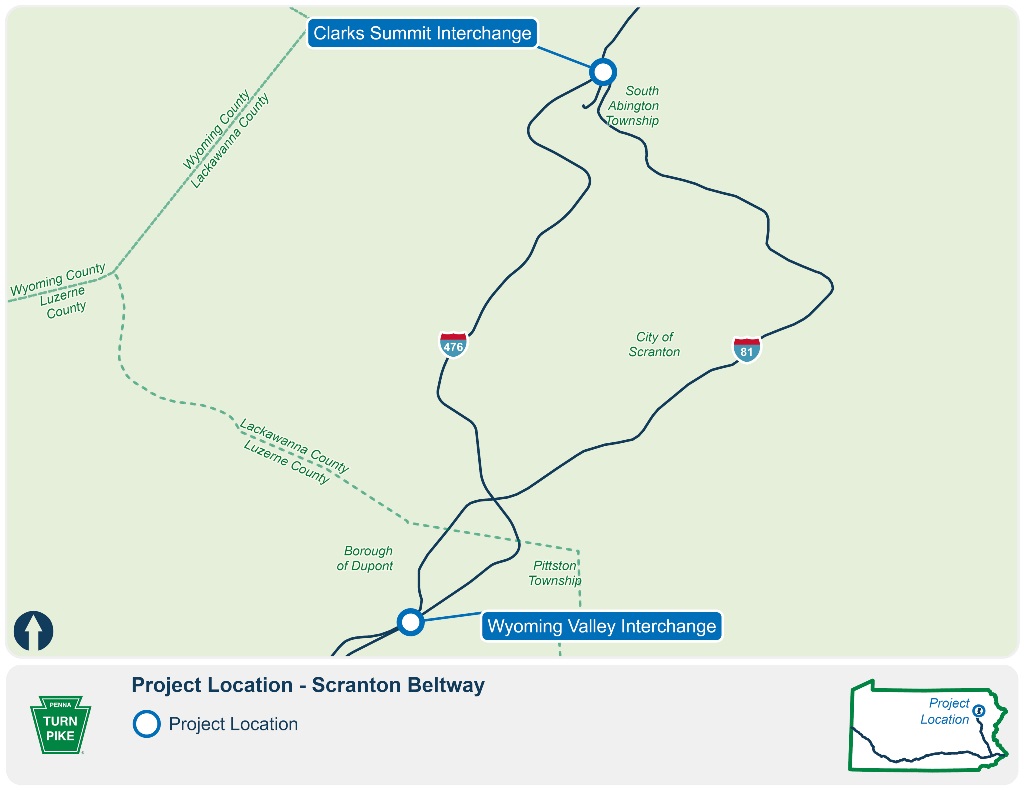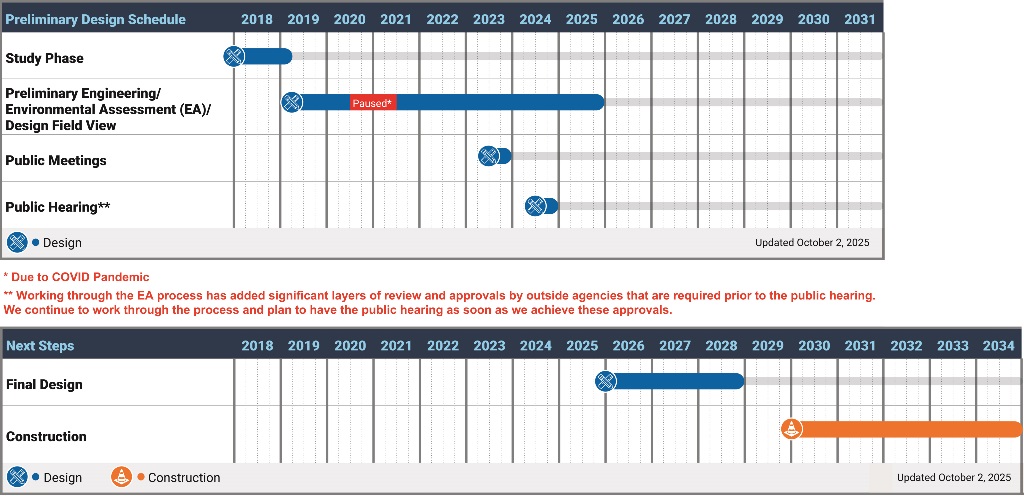Scranton Beltway Environmental Assessment
Please check the Engagement page for the most current information.
Project Overview
Scranton Beltway – A Better Way Around the City
The PA Turnpike is planning an exciting improvement for drivers in the Scranton area - the Scranton Beltway. This project will create a smoother, more direct connection between Interstate 81 and the Turnpike’s Northeast Extension (I-476), helping to reduce traffic congestion and give drivers more travel options.
By building highway-speed links between these two major interstates, the Scranton Beltway will allow drivers to move seamlessly between I-81 and I-476 in both directions—northbound and southbound—without slowing down or navigating local roads.
Connecting Communities
The Beltway will include two key connections:
North of Scranton in South Abington Township, Lackawanna County (Clarks Summit area)
South of Scranton in the Borough of Dupont and Pittston Township, Luzerne County (Wyoming Valley area)
These new links will give travelers a convenient alternative to I-81, helping to shift traffic onto the Northeast Extension and reduce pressure on one of the region’s busiest roadways. Today, more than 70,000 vehicles a day use parts of I-81 near Scranton, compared to about 10,000 daily vehicles on the Northeast Extension. The Beltway will help balance that load and keep people moving.
Backed by Investment in Pennsylvania’s Future
The Scranton Beltway Project is made possible thanks to Act 89, Pennsylvania’s landmark transportation funding law passed in 2013. This investment reflects the state’s commitment to improving mobility, safety, and economic opportunities for communities across the region.
Building a Greener, More Sustainable Turnpike
By making these improvements, we're helping to keep the air cleaner and the environment healthier for our communities by decreasing emissions. This project also supports the Turnpike's ongoing commitment to sustainable and smarter, greener transportation.
Stay Connected
Want to stay up to date as the project moves forward? Click here to fill out the contact information form to receive updates and important information.


